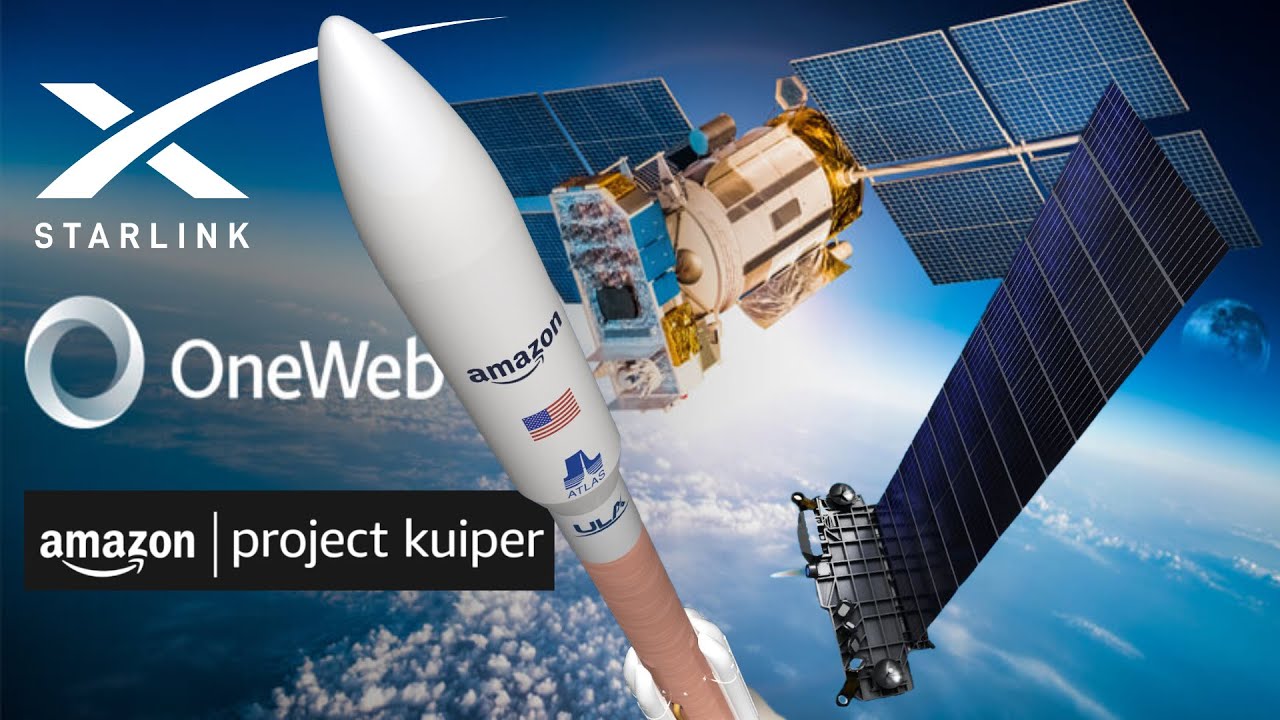Spacex Starlink Internet Alternatives You Need To Know About
Unleash Your Creative Genius with MuseMind: Your AI-Powered Content Creation Copilot. Try now! 🚀
Welcome to another tech-filled tea time, where we're about to dive into the world of alternatives to SpaceX's Starlink. For some, Starlink may seem a tad expensive at the moment, but fret not! We're here to explore other fascinating options. So, grab your cup of tea (or coffee), and let's get started.
But before we embark on this journey through the stars and beyond, a quick reminder - if you haven't checked out my ebooks, head over to jcrucina.com/books. And if you haven't subscribed yet, consider hitting that subscribe button. You can also enable notifications by clicking the little bell icon - that way, you won't miss any of my exciting updates.
For those who are here solely for Starlink content, don't worry; I've got an entire Starlink playlist loaded with over a hundred videos, packed with tips, tricks, and all the 'whys' you need to know. Because, remember, this channel is all about the 'why.'
Now, let's venture into the cosmos and explore some compelling alternatives to SpaceX Starlink.
OneWeb: A Rival in the Making
Our first contender in the race for global internet connectivity is OneWeb. Based in the UK, OneWeb is just one launch away from blanketing the entire Earth with its satellite constellation. While Elon Musk's Starlink is undoubtedly a frontrunner, OneWeb is a promising challenger.
Both Starlink and OneWeb employ constellations of satellites in low Earth orbit, providing users with lower latency, ensuring a smoother internet connection, lag-free video calls, and hassle-free collaboration. But here's the twist - while Starlink is primarily targeting individual customers, OneWeb is looking to collaborate with existing telecom providers, helping them expand their networks. OneWeb made its debut just last year, amassing an impressive $800 million in bookings by December. The satellites it launched are expected to be operational by May this year, serving 48 states in the US and Northern Mediterranean and Indian regions.
With a constellation of under 1,000 satellites, OneWeb aims to give Starlink a run for its money. The age of satellite-based internet has truly arrived.
Amazon's Project Kuiper: Bridging the Digital Divide
Now, let's shift our focus to Amazon and their Project Kuiper. Amazon aspires to deploy a constellation of 3,236 satellites in low Earth orbit to provide broadband internet services to underserved users globally. Just like Elon Musk's Starlink, Project Kuiper is on a mission to bridge the digital divide, connecting those who've long been left without quality internet access.
The three antenna options Project Kuiper offers are simply game-changers. The first one, an 11-inch design for home or business use, boasts speeds of up to 400 megabits per second at an affordable price. The second, a compact 7x7-inch antenna, delivers 100 megabits per second, making it the most economical customer terminal. Finally, there's a substantial 19x30-inch design targeting government, telecommunications, and enterprise applications, reaching speeds of a staggering one gigabit per second for downloads.
But here's the kicker: Amazon is yet to launch any satellites into low Earth orbit for Project Kuiper. The first two prototypes are set to launch in early 2023, and Amazon aims to complete over 3,000 satellite launches in the next five years.
Initially, Amazon left SpaceX out of the picture when securing satellite launches, but later, they hinted at a possible collaboration with Elon Musk's company. Project Kuiper plans to invest $10 billion in this endeavor, securing the largest commercial procurement ever. It's a colossal undertaking, but with Amazon's resources, it's certainly achievable.
The 5G Option: A Local Solution
If you're fortunate enough to have access to 5G in your area, consider it a viable alternative to Starlink. Services like Verizon Home Internet and T-Mobile Home Internet offer impressive 5G options. The downside, however, is that 5G is predominantly available in urban areas. Rural communities often lack access to this high-speed network, leaving them with less reliable options like LTE or 4G.
Even in cities where 5G is available, there's a catch. Many providers promise 5G speeds, but the reality is often far from impressive. While European 5G networks deliver blazing fast speeds, 5G in the US often falls short, especially when it comes to upload speeds.
In essence, for most rural areas, Starlink remains the only compelling extraterrestrial internet provider. Starlink's low Earth orbit satellites, coupled with their ambitious expansion plans, make it the best choice for many.
In conclusion, while the tech world is buzzing with exciting alternatives to SpaceX's Starlink, they're still in the making. OneWeb and Project Kuiper hold immense promise, but it'll be a few years before they're fully operational. In the meantime, if you're seeking reliable, low-latency internet in rural areas, Starlink is your best bet. Stay tuned for future developments as we ride the waves of innovation in the digital age.
With that, I bid you adieu until our next cosmic exploration. Stay safe, stay curious, and remember that the world of tech is ever-evolving, filled with endless possibilities.

Related Recaps
- Beyond Portland: Unique Fun Facts That Will Make You Fall in Love With Oregon!
- FLASH BEATS (ESPECIAL 400K) - As Lendas do Futebol (Blue Lock) | [React em Casal] 🔥
- Kịp tiễn đưa NSUT Vũ Linh tôi bất lực nhìn dòng người giẫm đạp lên mộ người đã khuất
- Wir ÖFFNEN 20 Easter GIFTS vom neuen Pet Simulator X Oster UPDATE!
- Tootin' and Pooin': The Natural Way to Detox! 💩